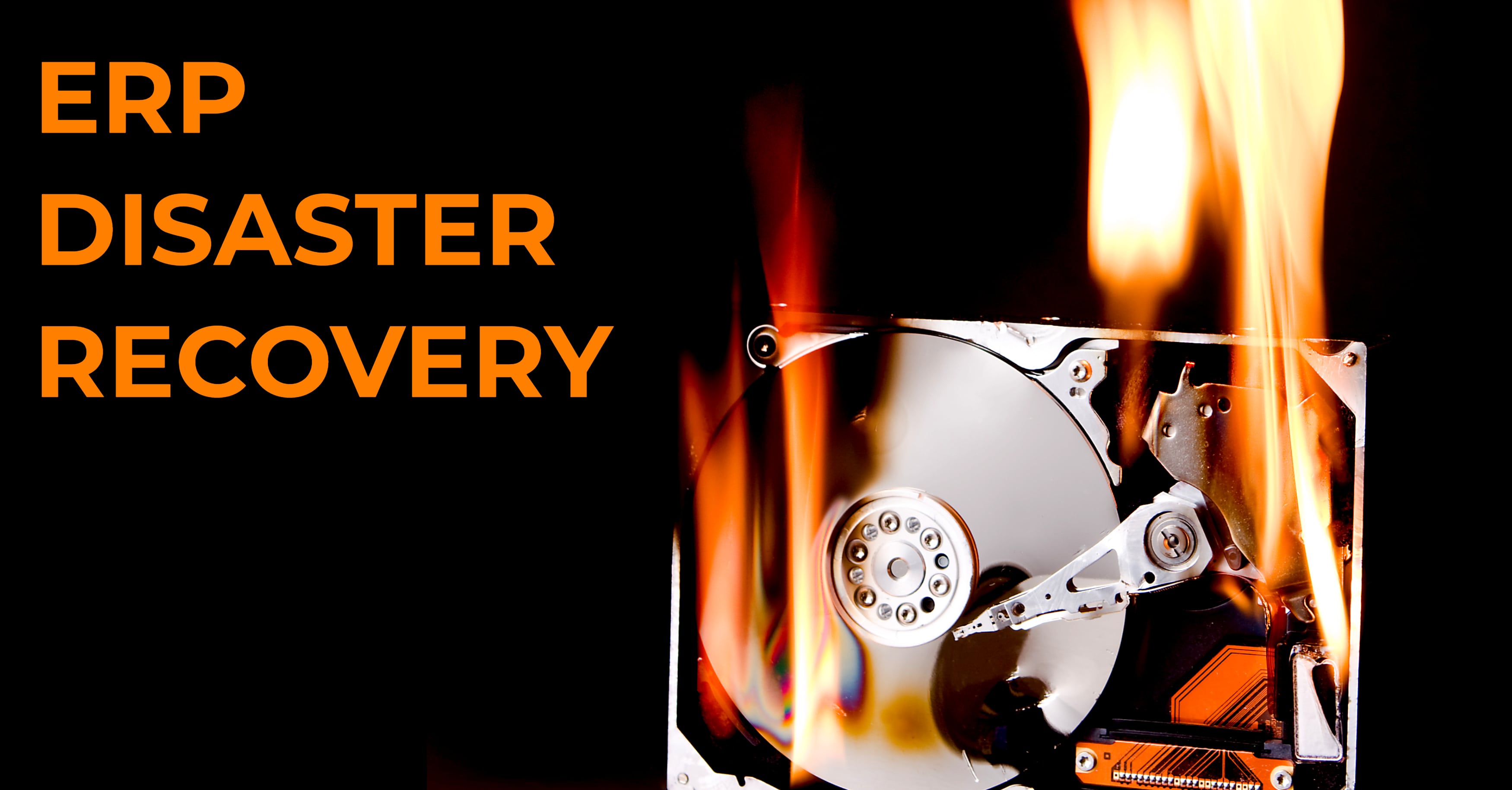ERP Software Disaster Recovery
Nobody likes planning for disaster, but what’s worse—creating a plan to backup and recover your software or losing millions after your servers go down? Your enterprise resource planning (ERP) solution is the backbone of your business, storing critical data and managing processes throughout your organization. When your system goes down, your whole business goes down with it. What can you do to protect your software and your organization from destructive downtime?
Our ERP consultants are here to help. Below, we list three of the essentials for protecting your software investment against disaster.
Disaster Recovery Plan
Few businesses have a documented and tested disaster recovery (DR) plan, leaving them at risk of facing substantial downtime. In fact, 49 percent of SMBs claim it would take three months to recover from a natural disaster and over 90 percent of businesses that have endured 10 or more consecutive days of downtime become bankrupt within a year. As these figures indicate, disaster recovery needs to be a high priority to keep these threats at bay.
Follow these guidelines to develop a comprehensive DR plan:
- Establish priorities: Figure out which applications are essential for daily performance and those which your company can go without for a brief period.
- Define metrics: From these priorities, you can develop Recovery Time Objective (RTO) and Recovery Point Objective (RPO) metrics. RTO is the amount of time between the disaster and when you’d ideally be up and running again. RPO is the interval between the last time a file was backed up and system shutdown that must be maintained to continue normal operations.
- Assign roles: Make sure you know who is responsible for what in the event of a disaster by recording everyone’s recovery roles. This should include not only employees but also vendors and consultants.
- Take inventory of assets: Take a holistic approach in this step. After all, IT systems consist of hardware, software, data, middleware and even the buildings where they’re being maintained. There should be a plan in place to protect each component of your enterprise technology.
With a thorough DR plan, you can maintain business continuity no matter the circumstances.
Backup Strategy
Businesses place far too much trust in their software solutions, especially their cloud ERP. Sure, leading cloud vendors such as Microsoft Azure replicate data and include geo-redundant disaster recovery, but that still leaves some cracks in your business continuity plan. Cloud providers lack experience in restoration, and their backup costs can quickly skyrocket. Additionally, real-time data processing inhibits ERP solutions from fully backing up files.
To fill in these cracks, follow our tips to ensure your DR plan includes a robust backup strategy:
- Determine backup frequency: How long can you go without specific datasets? Determine how up to date your different types of data need to be to resume business as usual. From there, you can create a backup schedule.
- Store off-site copies: According to the 3-2-1 Rule of Backup, each business should have three copies of data on two different media with one copy stored off site. This ensures that you can retrieve data in the event of an attack on the main data center. Off-site storage is often done through the cloud or tape cartridges.
- Test and audit backups: During your ERP implementation, test your backup system to check that it runs as planned. Furthermore, periodically audit the backup strategy to make sure it’s still protecting your enterprise data.
Cloud software offers a high level of security, but not high enough. Cover all your bases to protect your priceless information by developing a fool-proof backup strategy.
Comprehensive DR Solution
As you’ve probably realized at this point, a lot goes into ERP disaster recovery and business continuity. Few enterprises, particularly small and midsize companies, possess the internal resources and expertise to bear the heavy responsibility of protecting major IT investments. That’s why your best bet is to select a comprehensive DR solution that’ll take care of ERP security for you.
EverSafe! is such a solution. Our partners at Clients First developed EverSafe! to minimize downtime and protect all your enterprise data. Whether you deploy ERP in the cloud or on-premises, EverSafe! has you covered.
EverSafe! includes:
- Extensive backup: It goes beyond backing up data to also back up entire clones of servers. Therefore, when a physical or virtual server goes down, you can still be up and running in minutes. Servers are copied as often as every five minutes and sent to the cloud, keeping your data secure and up to date.
- Quick data restoration: Let’s say your server includes a terabyte of data. It can take weeks for cloud vendors to restore all this information, but EverSafe! backs up data in two bi-coastal data centers and can ship it to you overnight.
- Complete service: Unlike any other solution, EverSafe! provides disaster recovery, backup, on and off-site virtualization, ransomware protection and more. Experts are on hand 24/7/365 to keep your investments safe.
EverSafe! is an affordable, all-in-one solution for maintaining your ERP system’s security.
Wrap Up
Organizations rarely put enough consideration into their ERP software’s disaster recovery. Fortunately, you don’t have to with EverSafe! Its comprehensive backup and DR solution will have your system up and running in minutes, safeguarding your enterprise from costly downtime.
EverSafe! is just one of the many solutions available at Datix. For over 20 years, we’ve continued adding to our list of platforms and services to serve as a one-stop shop for manufacturing and distribution software. A certified Epicor partner, our consultants execute implementations, integrations, customizations and more to optimize each client’s business performance.
Keep your ERP safe and sound. Contact Datix to learn more about our software solutions and services!
{{cta(‘770c1544-d87d-4acb-9fc4-7a25e1385094′,’justifycenter’)}}


